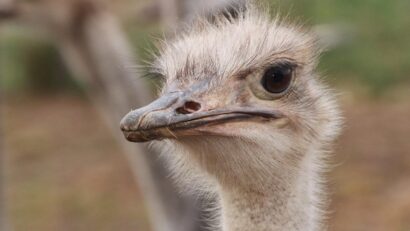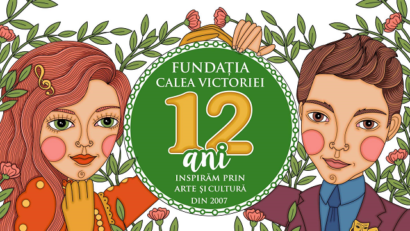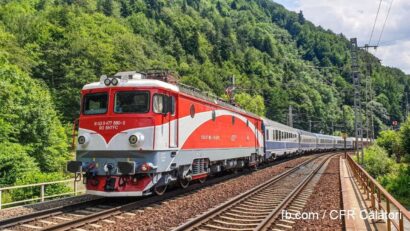The Buffalo Farm Digital Museum
In Pecica, Arad County, you are invited to discover an unusual blend of the old and new, at the Visitors Centre of the local buffalo farm, where an endangered species has become the pretext for what international media called the worlds only fully digita

Ana-Maria Cononovici, 04.10.2015, 13:59
In Pecica, Arad County, you are invited to discover an unusual blend of the old and new, at the Visitors Centre of the local buffalo farm, where an endangered species has become the pretext for what international media called the world’s only fully digital museum.
As architect Claudiu Ionescu described it, “the building, inspired by Constantin Brancusi’s sculpture titled ‘The Miracle’, grows naturally from the ground by means of a set of golden spirals, the Fibonacci spirals, and takes a shape that suggests the effort to break free from the burdens of the past and aspire towards the sky.
The building thus gives visitors a sense of aspiration, which is the aspiration of life itself.” Marinela Petran, the head of the Project Sustainability Centre with the Pecica Town Hall, is our guide at the Visitors Centre and the buffalo farm, which is in fact a small zoo: “First we built a stable as they used to make them in the old days, with a thatched roof, for 25 buffalos. The following year we built this wonderful visitors’ centre, with state-of-the-art equipment, which prompted people to call it a digital museum. We have two interactive desks where visitors can access the internet and visit other museums in the world, two large-screen TV sets, two overhead projectors, a virtual bike that visitors can pedal while watching onscreen a beautiful trail in Lunca Muresului area. We also have a storage area for 60 bicycles, because we need to stay fit, to keep ourselves healthy and enjoy the beauty of nature.”
A playground for children and a modern pavilion for the ten cast iron pots that take part in an annual competition called the “Cast Iron Pot Festival,” add to the facilities of the centre, as our guide Marinela Petran added: “At the buffalo farm we try to protect this endangered species, the Romanian buffalo of the Talmaciu area, which is in the north of Arad County. These are semi-wild animals, we cannot touch them but we can watch them. Baby buffalos are called ‘malaci’, or calves. They are very interesting especially for children, who don’t get many chances to see animals in their natural habitats. We have found a way to protect the animals while allowing them to live in their natural habitat.”
Here visitors also have the opportunity to sample the famous Pecica bread, first documented in 1923, at the oldest bakery in town, still functional, where children and adults can knead the dough and can see how bread used to be made in the old days, with no additives and preservatives. At the visitors’ centre of the Buffalo Farm you can actually see a bread oven made up of baked bricks, built as such ovens used to be built 250 years ago.
Since October 2013, the rather special building constructed at the buffalo farm has been described by reviews such as Club Innovation or Culture France as ‘the first fully digital museum in the world’. Covering only 125 square meters, the building is an example of extremely effective use of space. The architect who designed it says that the 125 meters manage to exhibit as many items as museums of thousands of meters, and therefore the costs of maintenance and staff are much lower.
Here is Marinela Petran again, with details: ”To explain how we got to having a digital museum, we need to talk about the architect who designed the building and who took part in the process, every step of the way. The architect is Claudiu Ionescu, a young man of 28, who liked the idea of a digital museum so much that he promoted it everywhere. I can’t really say it’s actually a museum, but the devices we have here are more sophisticated than elsewhere. We can host 3D projections, we have 60 goggles, the building is partially ecological, with a thatched roof, which people can climb on and admire the view from the terrace there. We also have a wall made up of natural plants. Water is rerun and we also have a small water-treatment plant. Obviously, we also have photo-voltaic panels that provide us with the necessary electricity.”
The tilted shape of the roof allows for a better collection and recycling of rain water, which is gathered in special tanks and then re-used for various purposes, other than drinking. The terrace, covered in grass, provides a 360-degree panorama of the surroundings and a beautiful view of the Lunca Muresului Nature Park. Another concept that architect Claudiu Ionescu added to the project was the fact that the pavement around the building and the building itself make up a giant solar watch, as the shadow of the edifice marks the time on the sundial.
The museum can host exhibitions, presentations, educational projects for children and workshops on the use of domestic species for the rehabilitation of water biotopes in the protected areas, which is the result of an vanguard project.






























